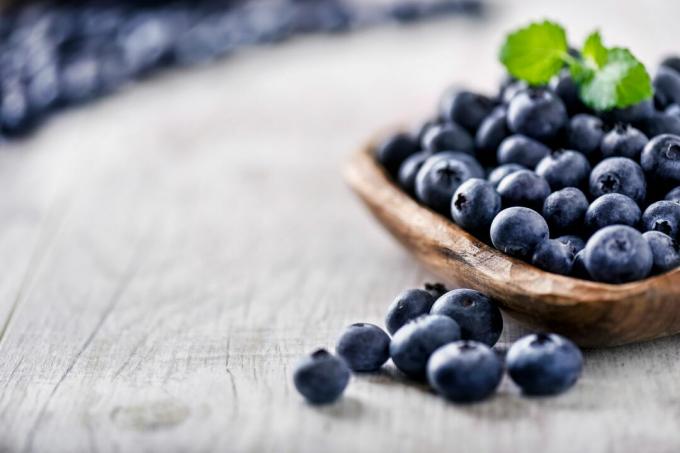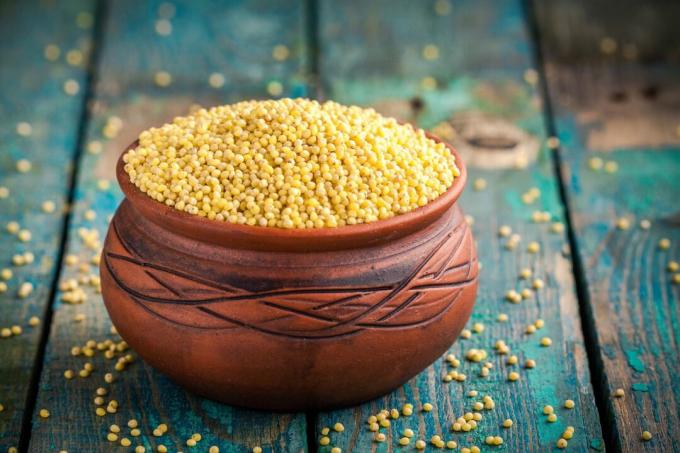Superfoods have now become part of everyday life for many people. But what exactly is a superfood? We reveal which foods are defined as superfoods and show what is really true of this trend around healthy wonder drugs.

Whether on supermarket shelves, in the media or on various private Facebook pages - superfoods are literally on everyone's lips. Especially new and exotic products such as chia seeds (Salvia hispanica) or Goji berries (Lycium barbarum) are becoming increasingly popular. But are these super foods really that healthy or just a food industry marketing ploy?
contents
- What is a superfood?
- Benefits of Superfoods: Is It All Just a Lie?
- Disadvantages of superfoods: how sustainable is the trend?
- Domestic alternatives for superfoods
What is a superfood?
The very name superfood makes you think that it has to be healthy, nutrient-rich, but low-calorie food - everything is great. But one is probably also quick to hope that not only the food itself contains the attribute super, but also your own body after it has been consumed. In recent years, health awareness has increased significantly in many Western countries. To feel good in your own skin, to be fit and, best of all, to look even better have become core goals. This is fueled by the steadily growing lifestyle industry.
Superfood is a marketing term in itself. There is no official definition of what exactly a superfood is, what it must contain, or the like. Nevertheless, we can find more and more of them in regular supermarkets or discount stores. On the one hand there are the chia seeds. A few years ago, with a bit of luck, you could find the small, mostly grayish globules in organic shops or health food stores, and the prices are usually not exactly cheap. They are now available from Germany's largest discounter, even in organic quality. The seeds originally come from Central America and were probably already cultivated and consumed by the Aztecs. Chia are particularly rich in omega-3, but also contain many antioxidants, vitamins and minerals.

Other exotic species that are more and more often on the plate, or rather in the muesli or smoothie, are goji berries, hemp seeds (Cannabis sativa) or wheatgrass (Triticum aestivum). All of these foods are said to have a particularly good effect on health and even alleviate diseases or prevent them from developing in the first place. Empirical evidence to this day is still contradicting itself. Some studies were able to find improvements for the health of subjects, other researchers did not get any significant results.
Benefits of Superfoods: Is It All Just a Lie?
Even if many assume that the name superfood is just a sophisticated marketing ploy, there is still a spark of truth behind the name. In fact, many superfoods, such as goji berries, are particularly rich in nutrients and shine with a high number of vitamins, minerals and secondary plant substances. In this way, the plants can actually bring health benefits and contribute to a varied and healthy diet. However, they are not miracle cures: So far there is no reliable scientific data that prove that the health effects go beyond that of a balanced diet. The slimming effect of various superfoods has also not been proven. However, those who use superfoods instead of sweets will likely lose a few pounds through the healthier diet. The superfoods are therefore particularly recommended as a healthy snack in between.

Disadvantages of superfoods: how sustainable is the trend?
Superfoods are a great addition to a balanced diet - but healthy foods also have their downsides. In particular, the sustainability of such foods is often discussed. The reason for this: A large part of the superfoods comes from tropical regions and has to be imported specifically for the German market. The long transport of tropical food has a negative impact on the climate balance and can also significantly reduce the nutrient content of the plants. Accordingly, there are often fewer of the valuable ingredients in superfoods than actually assumed. In addition, food that comes from distant regions must have an increased Pollutant load can be expected, since German requirements are often not or only insufficiently complied with will. Nevertheless, superfoods should not be demonized: variety on the plate brings many health benefits and can be usefully supplemented with superfoods. However, it is advisable not only to eat superfoods, but preferably fruits and vegetables Choosing your own or regional cultivation as the main component and only occasionally adding superfoods enrich.
Domestic alternatives for superfoods
Many people understand superfoods as exotic fruits from the tropics. This assumption is wrong - particularly healthy foods do not always have to come from the other end of the world: local fruit and vegetables can also be considered superfoods by definition. Blueberries (Vaccinium myrtillus) are particularly rich in vitamins K, C and antioxidants. They are also said to alleviate heart disease and high blood pressure. Even if the British Dietetic Association has not been able to clearly prove a direct health improvement, it still recommends the daily consumption of the healthy berries.

In fact, there are a number of local foods that can safely be described as superfoods:
Black elder (Sambucus nigra): Similar to blueberries, elderberries also have a high content of anthocyanins, which are supposed to protect the body from oxidation processes. With that they stand out as what is known as superfood Açaí berry (Euterpe oleracea) in nothing.
Black currants (Ribes nigrum): the Blackcurrant especially impresses with its extremely high vitamin C content. In fact, it even exceeds that of the goji berry, making the black currant one of the real superfoods.
Walnuts (Juglans regia): With its high content of monounsaturated and polyunsaturated fats, the walnut is an ideal energy donor. Thanks to its long shelf life, the walnut is available regionally almost all year round, making it a great alternative to avocado (Persea americana).
Millet (Panicum miliaceum): Gluten-free, rich in protein and with a high iron content, millet is a great supplement that vegans especially like to use. In contrast to the superfood quinoa (Chenopodium quinoa), however, it is also grown in Germany and is therefore available regionally.

Red cabbage (Brassica oleracea convar. capitata var. Rubra): With a high content of anthocyanins, vitamins and minerals it is Red cabbage a useful addition to the menu and can serve as an alternative to açai berries.
Flaxseed (Linum usitatissimum): You can also use chia seeds instead of chia seeds linseed grab: The local superfood convinces with a high content of fiber, omega-3 fatty acids, protein and calcium and can be used in a variety of ways.
Chamomile (Matricaria chamomilla): Matcha tea is considered the new trend among superfoods. A healthy regional alternative is that chamomile: It also stimulates the metabolism and has a relaxing effect.
So that superfoods from the garden at home are really good for your health, you should always pay attention to organic quality in your garden products. In our Plantura shop you will find everything you need for it.


